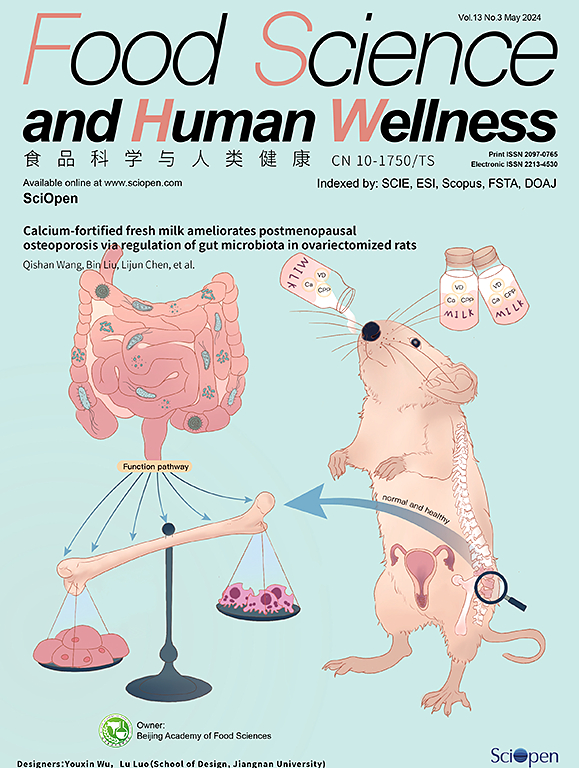Comparative proteomics analysis reveals the domesticated Lepista sordida primordium differentiation regulation mechanism and the subsequent different development patterns in the pileus and stipe
IF 7.4
1区 农林科学
Q1 FOOD SCIENCE & TECHNOLOGY
引用次数: 0
Abstract
The wild Lepista sordida is a kind of precious and rare edible fungus. An excellent strain of it by artificial domestication was obtained, which was high-yield and high in iron content. In this study, high-throughput comparative proteomics was used to reveal the regulatory mechanism of its primordium differentiation in the early fruiting body formation. The mycelium before the primordium differentiation mainly expressed high levels of mitochondrial functional proteins and carbon dioxide concentration regulatory proteins. In young mushrooms, the highly expressed proteins were mainly involved in cell component generation, cell proliferation, nitrogen compound metabolism, nucleotide metabolism, glutathione metabolism, and purine metabolism. The differential regulation patterns of pileus and stipe growth to maturity were also revealed. The highly expressed proteins related to transcription, RNA splicing, the production of various organelles, DNA conformational change, nucleosome organization, protein processing, maturation and transport, and cell detoxification regulated the pileus development and maturity. The proteins related to carbohydrate and energy metabolism, large amounts of obsolete cytoplasmic parts, nutrient deprivation, and external stimuli regulated the stipe development and maturity. Multiple CAZymes regulated nutrient absorption, morphogenesis, spore production, stress response, and other life activities at different growth and development stages.
比较蛋白质组学分析揭示了驯化鳞栉水母原基分化调控机制及随后绒毛和镫骨的不同发育模式
野生雷公藤是一种珍贵稀有的食用菌。通过人工驯化,获得了高产、高铁质的优良菌株。本研究利用高通量比较蛋白质组学揭示了其子实体形成早期的初生分化调控机制。子实体分化前的菌丝主要高表达线粒体功能蛋白和二氧化碳浓度调控蛋白。在幼菇中,高表达的蛋白质主要参与细胞成分生成、细胞增殖、氮化合物代谢、核苷酸代谢、谷胱甘肽代谢和嘌呤代谢。此外,还揭示了绒毛和菌柄从生长到成熟的不同调控模式。与转录、RNA剪接、各种细胞器的产生、DNA构象变化、核糖体组织、蛋白质加工、成熟和运输以及细胞解毒有关的高表达蛋白调控着绒毛的发育和成熟。与碳水化合物和能量代谢有关的蛋白质、大量过时的细胞质部分、营养匮乏和外部刺激调控着柄的发育和成熟。多种 CAZymes 调节不同生长和发育阶段的营养吸收、形态发生、孢子产生、应激反应和其他生命活动。
本文章由计算机程序翻译,如有差异,请以英文原文为准。
求助全文
约1分钟内获得全文
求助全文
来源期刊

Food Science and Human Wellness
Agricultural and Biological Sciences-Food Science
CiteScore
8.30
自引率
5.70%
发文量
80
审稿时长
28 days
期刊介绍:
Food Science and Human Wellness is an international peer-reviewed journal that provides a forum for the dissemination of the latest scientific results in food science, nutriology, immunology and cross-field research. Articles must present information that is novel, has high impact and interest, and is of high scientific quality. By their effort, it has been developed to promote the public awareness on diet, advocate healthy diet, reduce the harm caused by unreasonable dietary habit, and directs healthy food development for food industrial producers.
 求助内容:
求助内容: 应助结果提醒方式:
应助结果提醒方式:


